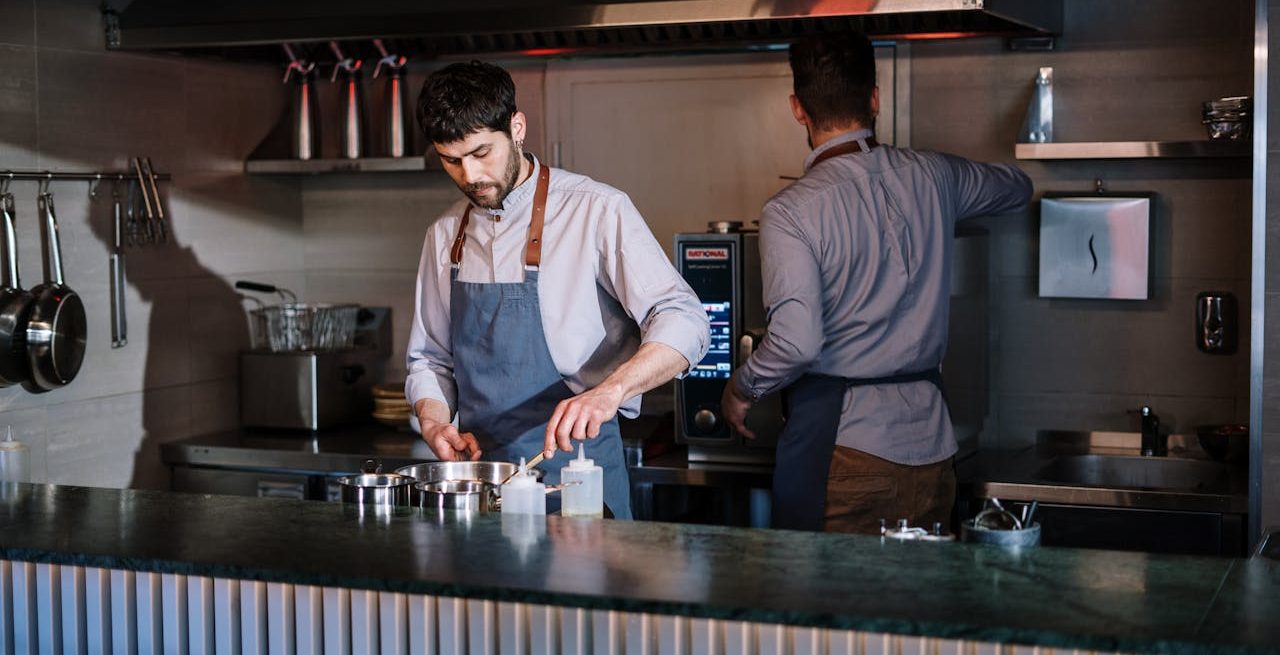The Hidden Ingredient to Restaurant Resilience? Better Communication Tools
3 Min Read By Caileigh Peterson
In the fast-paced world of food service, communication is everything. From taking orders to coordinating back-of-house operations, every moment counts. Yet many restaurants are still relying on outdated or overly complex communication tools that slow down operations and hinder their ability to deliver exceptional service.
Simple Communication Tools Are Critical for Restaurant Success
Midland’s recent survey of 1,000 managers in the retail, hospitality, and restaurant industries reveals just how crucial communication has become. Nearly all (96 percent) restaurant managers rely on communication technology in their daily operations, with the most popular tools being mobile phones (74 percent) and in-app platforms (46 percent).
But while the need for fast, clear communication is a given, the reality on the ground often tells a different story. Restaurants are juggling tools that are difficult to use, lead to missed messages or require constant workarounds—further adding stress to already busy shifts. This approach not only slows teams down but also creates room for error, which can directly impact service quality and customer satisfaction.
Despite the urgent need for better solutions, many managers admit they don’t have an initiative, or aren’t sure if they do, for their company to adopt new tools (63 percent). With so much happening in a typical restaurant environment, many are still relying on systems that overcomplicate operations or simply don’t work as intended. Still, a third of respondents said their daily operations would be significantly disrupted or even completely shut down if their current communication tools failed.
To reduce this stress, restaurants need to be able to refocus on what truly matters: customer experience. The solution? Eliminate unreliable, overly complex devices and instead prioritize simple, dependable solutions that deliver high impact and consistent reliability in any situation. These kinds of tools not only streamline operations, but also boost employee and customer satisfaction.
Small Internal Changes, Big Customer Impact
When operational tools are simplified, the process of onboarding and training new employees becomes easier. When thinking about the challenges respondents face in maintaining effective communication, they were equally concerned about unreliable communication during busy periods (25 percent) and difficulty training employees (24 percent). User friendly, intuitive tools, such as two-way radios, reduce the time and effort required, shortening the learning curve and minimizing the number of mistakes made during the first critical weeks on the job. This creates a smoother transition for new hires and reduces frustration for team members. When training staff on communication technology, managers face their biggest challenge with high turnover, which requires constant retraining of newer staff (26 percent). Streamlining training is the key to breaking this cycle.
Solving issues at the source—internally—has a clear and measurable impact on customer experience. Timing and teamwork are everything in restaurants. Even small lapses in communication can lead to missed orders, long wait times, or a lack of coordination between front-of-house and kitchen staff. Nearly half of respondents (42 percent) identified the greatest benefit of reliable communication tools as the ability to respond to customer needs more quickly. With tools like two-way radios, teams can instantly connect with one another to address situations such as food allergies, spilled drinks, or a sudden rush of customers, without having to run back and forth or rely on spotty devices. These seemingly small improvements create a noticeable difference in service quality which builds trust and satisfaction with guests.
Reliable Communication: The Backbone of Emergency Readiness
To truly elevate the customer experience beyond daily operations, restaurants must also be prepared for the unexpected. While efficient communication keeps service running smoothly during regular hours, it becomes critical when situations evolve that disrupt service, jeopardize safety, and test the internal systems. From severe weather to power outages, unforeseen disruptions are becoming more and more frequent.
In fact, 42 percent of managers say communication tools are essential to ensuring the safety of both staff and guests. Strong internal coordination can mean the difference between chaos and a calm, organized response. Supporting this, a quarter of managers recall a time when their business was affected by a natural disaster or unforeseen event when more reliable tools were desperately needed. These insights highlight the truth: dependable, easy-to-use systems are not only key for training sessions and smoother shifts, but for building resilience when it matters most.
Stronger Systems, Resilient Teams, Better Business
However, things are changing. As more restaurants upgrade their communication systems, many are seeing tangible benefits, from faster response times to improved customer service. The most significant impact is seen in business continuity, with 90 percent of those who have made upgrades in their communication tools reporting measurable improvements in their performance.
With enhanced communication tools, restaurants are improving their efficiency and ensuring they can handle both everyday challenges and unforeseen events. The lesson is clear: in an industry where margins are thin and competition is fierce, the restaurants that thrive are those that recognize communication as more than just an operational necessity—It’s the hidden ingredient that transforms good service into exceptional experiences.


